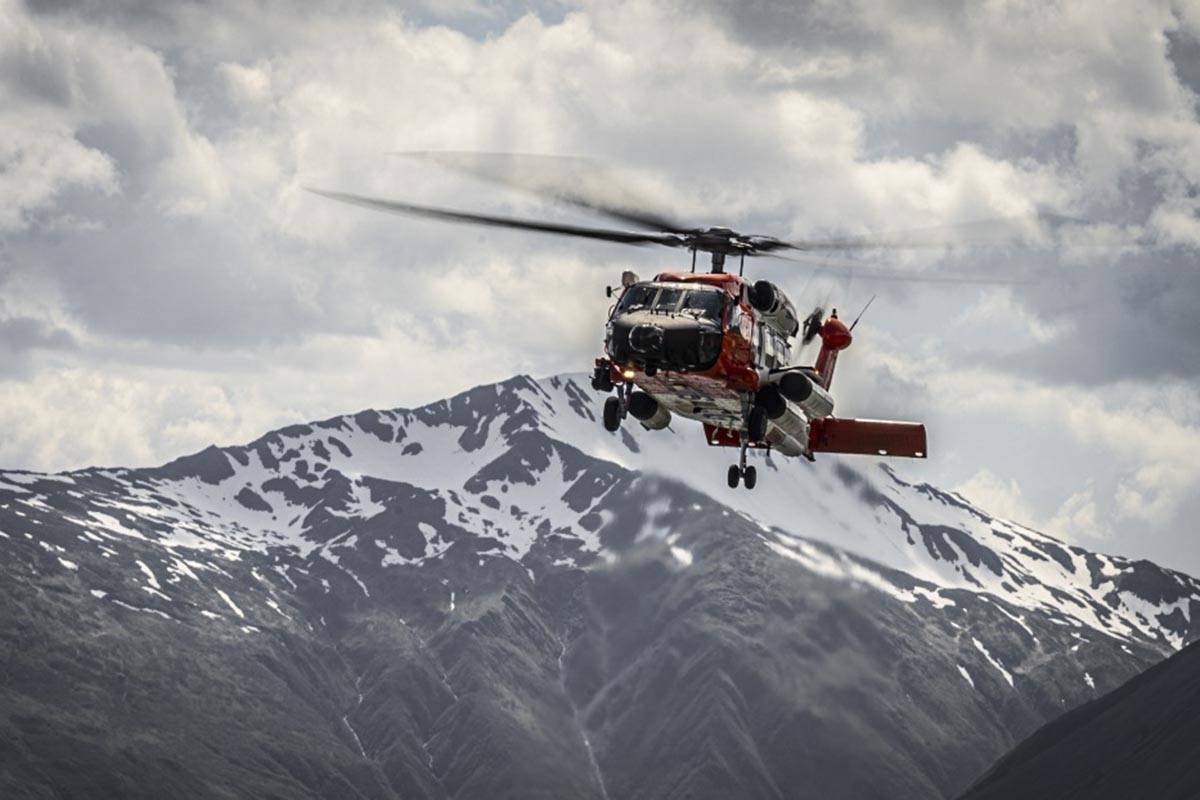For most of the country, the hospital is only an ambulance or a car ride away. In Alaska, naturally, things are more complicated.
For evacuations in isolated areas when commercial medical flight companies can’t reach someone who needs immediate evacuation, the U.S. Coast Guard and its MH-60 Jayhawk helicopters are often the tool of last resort.
“We’re equipped to deal with any sort of search and rescue that might be required,” said Lt. Will Sirokman, an MH-60 pilot with more than three years of experience flying in Southeast Alaska. “We usually go out with a crew of five: two pilots, a flight mechanic, a rescue swimmer, and a flight corpsman.”
The flight corpsman, an in-flight medic, is a particularly local adaptation to the search and rescue or non-maritime emergency medical service evacuations that the Coast Guard is called on to perform, Sirokman said.
Coast Guard rescues stranded hunter after boat capsizes
“We have flight corpsmen here in Sitka, which is unique for Coast Guard aviation units. It’s kind of something that’s developed here in the Southeast,” Sirokman said. “We keep that core unit together so the aircraft is always ready to deal with an emergency.”
Coast Guard Air Station is home to three MH-60s. The crews rotate 24-hour duty shifts, so the aircraft’s five crew are ready to go at any time. After they get the order down from District 17, Sirokman says, the aircraft is usually airborne within 30 minutes. Once they’re in the air, the challenges of flying in Alaska become rapidly apparent.
“It’s not uncommon that we have to follow the waterways to get to where we’re going. A big part of the challenge here is the navigation and dealing with the elements, and the darkness,” Sirokman said. “There’s very little cultural lighting here. We fly with NVGs (night vision goggles).”
Flying at night is one of the biggest challenges of the aviation world. While NVGs amplify ambient light, Sirokman said, there are conditions and places where lack of ambient light and lack of civilization mean there’s little-to-no light to amplify, and experience is the best guide.
Coast Guard medevacs teen from wilderness therapy camp
“They will not send a brand new pilot to Alaska. That’s a huge help to us,” Sirokman said. “These cases are very demanding on the crew.”
Non-maritime EMS transports typically involve meeting an ambulance at an airport or helipad, often not equipped with the kind of instrument flight rules infrastructure that a field at the Lower 48 would have, Sirokman said. Once the handoff of the patient is made, the flight crew will take them to a facility where a higher level of care is on offer, typically Juneau or Sitka, Sirokman said. The level of medevacs varies across the year, with more in the winter, but the number generally stays stable, Sirokman said. “Last year, we did 50, and that would be pretty typical over the last few years,” Sirokman said. ”I counted four that we’ve had in the past week or so.”
Sitka and CGAS Kodiak have to cover a lot of challenging terrain in some of the gnarliest weather imaginable, but Sirokman said he’s happy to be here, with a supportive community and a good mission.
“It has been a great experience, and I wouldn’t trade it,” Sirokman said. “When our SAR alarm goes over, more often than not, we’re going to go out and help someone.”
• Contact reporter Michael S. Lockett at 757.621.1197 or mlockett@juneauempire.com.

